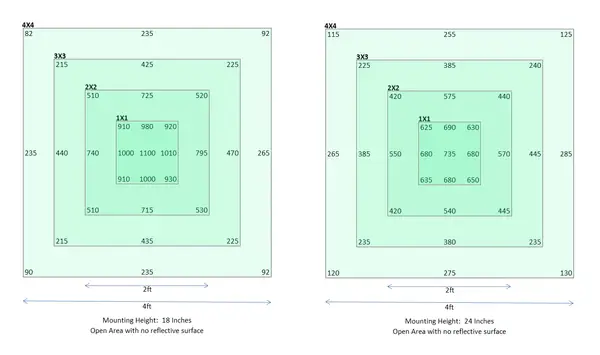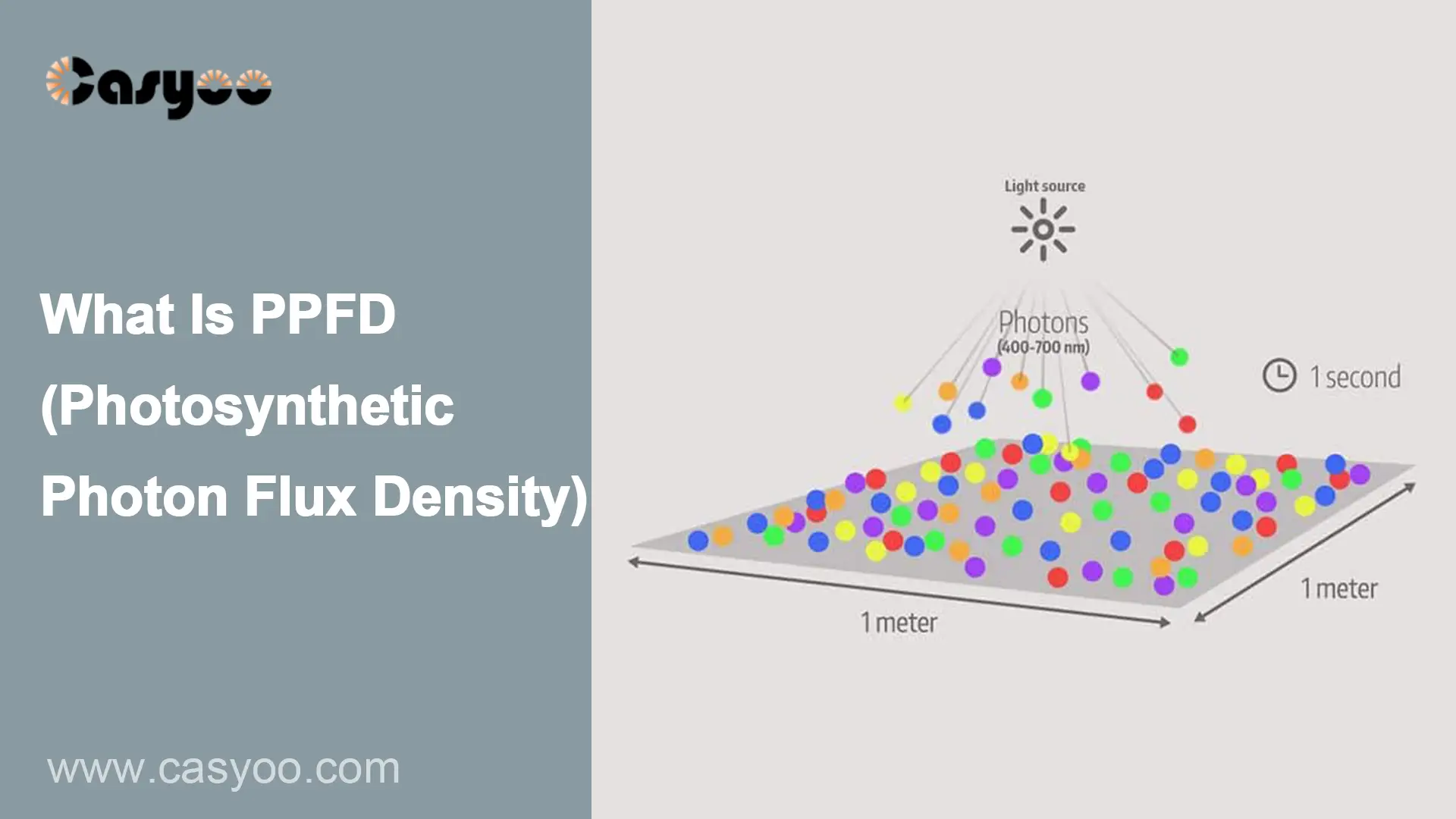What Is PPFD?
PPFD measures the PPF that reaches a particular area (m2) on a given surface, represented in μmol/m2/s. It is more useful than PPF when it comes to grow lights.
A specified growth area is typically covered by several target points that are evenly spaced out on PPFD maps used in horticulture (e.g., a 4′ × 4′ growing area with measurements collected at 6′′ intervals). The number of photons landing on the plant canopy at a given height at that precise position every second is represented by each target point measurement.

In general, different plant species have different PPFD requirements to achieve optimal yield. For example, flowering plants like cannabis require between 300 and 600 μmols during the vegetative stage and between 800 and 1000 μmols during the flowering stage. These measurements are PPFD.
PPFD still has significant drawbacks, including:
- All Photons are Equal: Despite the fact that red and blue photons are more important for promoting photosynthesis, this metric gives all photons in the 400–700 nm range the same value.
- Ignoring UV and Infrared Light: Research has demonstrated that the production of secondary metabolites is stimulated by UV and infrared light, whereas PPFD exclusively concentrates on PAR in the 400–700 nm range.
How to Measure it?
A PAR meter is typically used to measure PPFD since it can be placed at any height or location to measure the actual amount of light present. On the other hand, a PAR meter primarily measures light that is directed directly from the source. The measurement of light coming from the sides is not well done by it.





